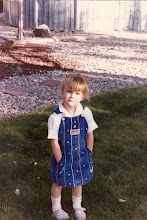I recently assembled a selection of small works into "show" mock-up. Some pieces were object-based while others were text-based, but all were related in the underlying theme of language. Once installed, it became clear that most of these pieces, though conceptual in nature, had more of a spatial presence than I had initially realized. This was a very significant revelation for me and I have since begun to consider my body of work from a new perspective. I had always thought of my diagram work, for example, as a way of conflating "intellectual" space with "real" space. And certainly several of my site-specific projects such as Misc., MINE/MEIN, and Anagram Haiku have derived their conceptual content from their physical locations. But it is now clear to me that all provide examples of language functioning in a variety of spatial ways.



The above piece was originally created as part of a series called Poems for the Number Six, but was also included in this installation as it seemed to be the most successful of those works. Although I like this piece, in retrospect I do not feel like it is out of place in the context of "spatial language."
The piece shown below, however, does fit into this theme, but in a very abstract way. I wanted to create a set of "instructions" for a specific mental activity - in this case the forming of a mental connection between a circular dot and a hole of the exact same size. The same "mental activity" can be applied to the material of the piece, as the wood grain is continuous from plaque to shelf. I saw this work as a way of illustrating the mental process that allows language to connect abstract thought to the material world.
Irony was placed on a pedestal towards the corner of the room for the installation documented here. In a revised iteration of the installation, the piece was placed on the floor in the center of the room, which I think greatly enhanced its spatial potential.
While a number of the pieces in this installation address language and space in abstract terms, this piece does so using metaphor. I was thinking about how a simple shape, in a particular material (felt), in a variety of colors could suggest a relationship to geographical places.

This small piece was originally conceived of as an installation maquette, but I am now convinced it functions best as a finished work at this scale. The text on the wall reads, "I often think/I think too much/I rarely think/I think enough." An appropriately scaled chair (not visible in this image, but seen through the "doorway" in the image above), sits in the center of the room facing the text, "I think too much."
 above: an installation view
above: an installation view






























